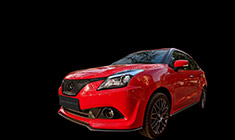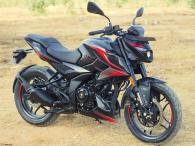News
Explained: Key differences between hybrid batteries & EV batteries
Because of the fact that the batteries in the pure EV have to be always charged to the fullest to ensure maximum range, they tend degrade that much faster.
BHPian 84.monsoon recently shared this with other enthusiasts.
There has been a lot of talk about giving strong hybrid cars govt. subsidy. There are none as of now - but this is short-sighted. The arguments put up by Tata, Hyundai, Kia and M&M against any subsidies for hybrids are below. Of course, they argue thus because they do not have hybrid technology and have only ICE engines and pure EVs:
- Hybrids still consume petrol, so India will still have to import fuel, EVs don't consume any fuel at all.
- They also need batteries with finite life, so import dependency for batteries does not go away. Battery replacements also need to be imported.
The first argument is totally misleading. A hybrid will consume only 50% of the fuel as a ICE vehicle for in-town runabouts which is where the vast majority of passenger cars are used. So would you rather save 50% fuel imports for hybrid applications today or wait for a decade for pure EVs to go mainstream? Also, that pure EVs in India, is most almost certainly being charged from the dirtiest and most environmentally harmful source of power possible - old, coal fueled power plants, which make up 75% of our power generation. On top, we are importing coal as well these days as we can't seem to figure out how to extract all that coal that lies beneath our country.
What they don't say on battery life: The reason Toyota hybrid batteries last so long is that the vehicles feature an efficient nickel-metal hydride battery pack. Battery management computer systems and a computer-controlled charge controller ensure that the battery charge doesn't exceed around 80% or fall below 20%. This computer-controlled shallow cycling dramatically improves the battery's cycle life, thermal management control, and long-term life. You can see in the various test drive photos etc. the battery is always at 2-3 bars out of 5 and never goes to full 5 bars even after a long hill descent. Similarly it seldom goes to 1 bar as it will be recharged as soon as it drops to lower levels of the second bar.
The big difference is that unlike pure EVs, the hybrid's battery does not have to be charged to its full. The range is not going to depend on the battery carrying a full charge, because the vehicle is anyway never powered entirely by the battery. This is the main reason behind the difference between pure EVs and hybrids in terms of battery life. Because of the fact that the batteries in the pure EV have to be always charged to the fullest to ensure maximum range, they tend degrade that much faster. With the petrol engine on board, the hybrid battery can be charged just a bit as and when required and discharged just a bit as well. This provides the necessary shallow cycle charging conditions to prolong the battery life vastly.
This is also the reason hybrids only need such small batteries as compared to pure EVs. The Innova has a 1.6 KWH battery while a typical EV of similar size will need to have 60-70 KHW to achieve similar range. That is 40 times the capacity of battery! The amount of mining and refinement activity for rare earths and consequent global warming to make a 60 KHW battery is not small! I firmly believe hybrids are a more environmentally friendly solution than pure EVS at this point in time for India, for this reason. You get 50% fuel savings for 5% of the rare earths that a pure EV needs - so do you extract 40 times more rare earths or save only 50% of the fuel?
Check out BHPian comments for more insights and information.



















